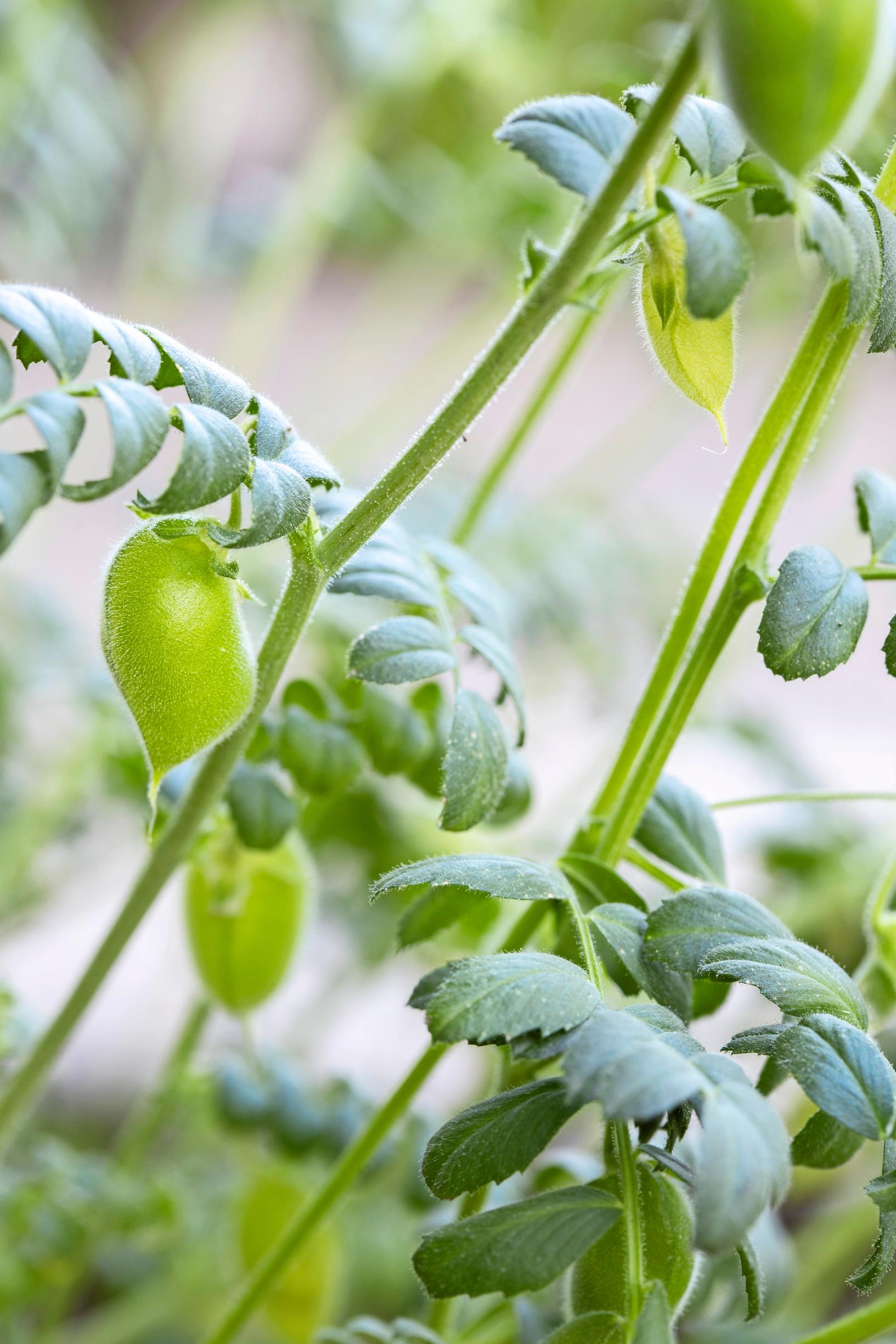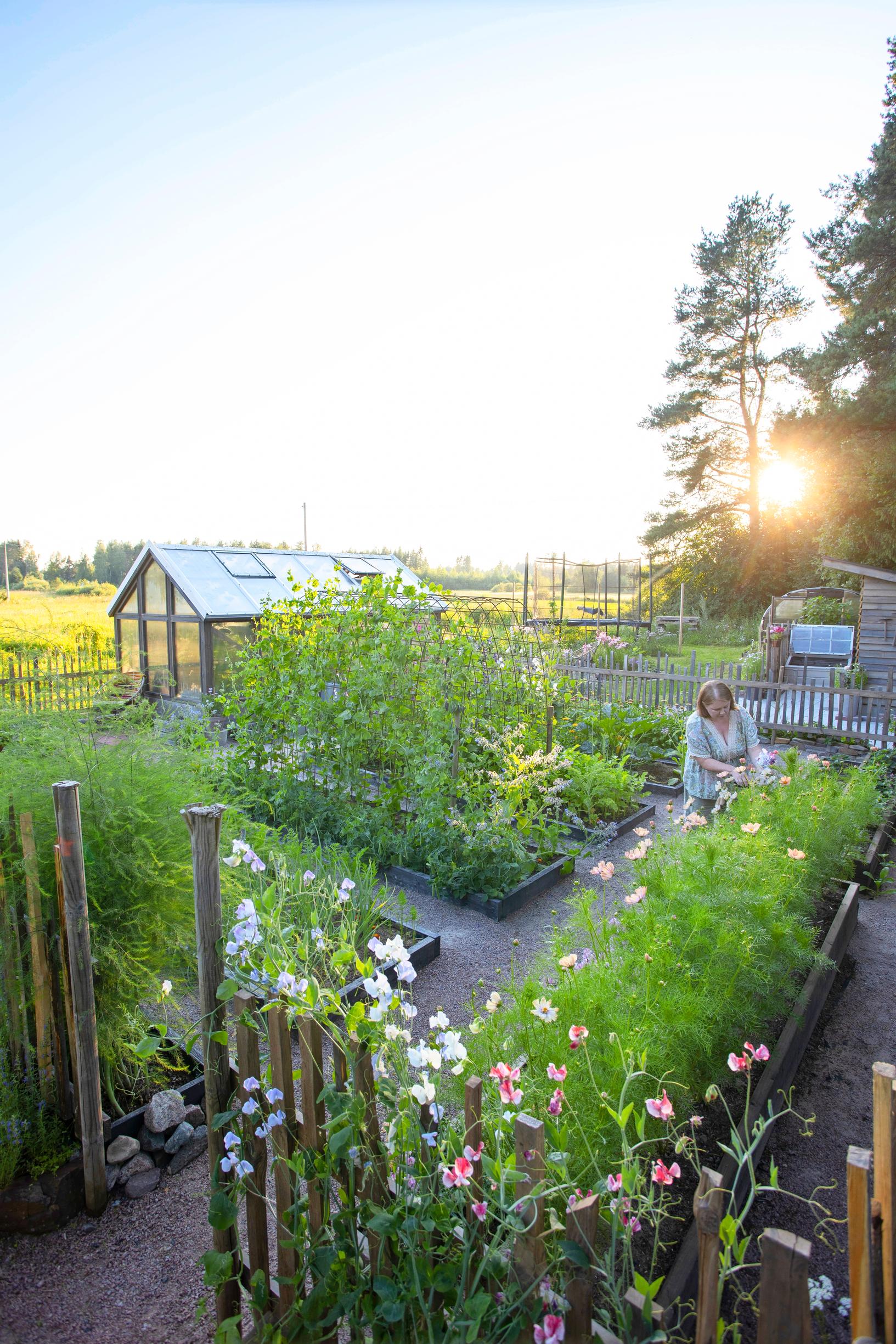
Virpi’s gorgeous kitchen garden has everything from chickpeas to summer flowers—check out her tips to set up your own!
Virpi Somero from Alavieska, Finland, tends her vegetable patch organically. In addition to growing edible crops, she has also become enthusiastic about cut flowers. Starting from late June, her family is self-sufficient with vegetables for many months. “It always feels just as great to skip the produce section at the grocery store,” says Virpi.
“When I was about twenty, I started my first kitchen garden on my apartment balcony. In 2012, when my husband Jani and I moved to our new house in Alavieska, the very first thing we did was set up a vegetable garden.
Since then, we’ve added something new every summer: wooden frames for the raised beds, a greenhouse, then another greenhouse. The latest addition is a nearly finished storage shed for tools. Next, we’d like to build a pergola by the greenhouse.
In winter, I start coming up with all kinds of new ideas for my kitchen garden, and Jani supports them wholeheartedly. Often, he has great ideas of his own. We used to have a standard wire fence around the vegetable patch to keep our dog from devouring our strawberries. When it broke, I looked into replacement options. I fell in love with English-style fences made from wire and trimmed hazel or chestnut poles, but once I did the math, it turned out to be fairly expensive.
Fortunately, Jani suggested that we build the fence ourselves using split scrap boards. It turned out wonderfully rustic and full of character in the end.
Whenever possible, I work in the garden from morning until night. When the children were little, I used to wander around the garden with a baby monitor around my neck. I’m originally from southern Finland, and it amazed me how it was still bright enough outside to garden even late in the evening after putting the baby to bed. Now, the kids have a trampoline right next to the kitchen garden.
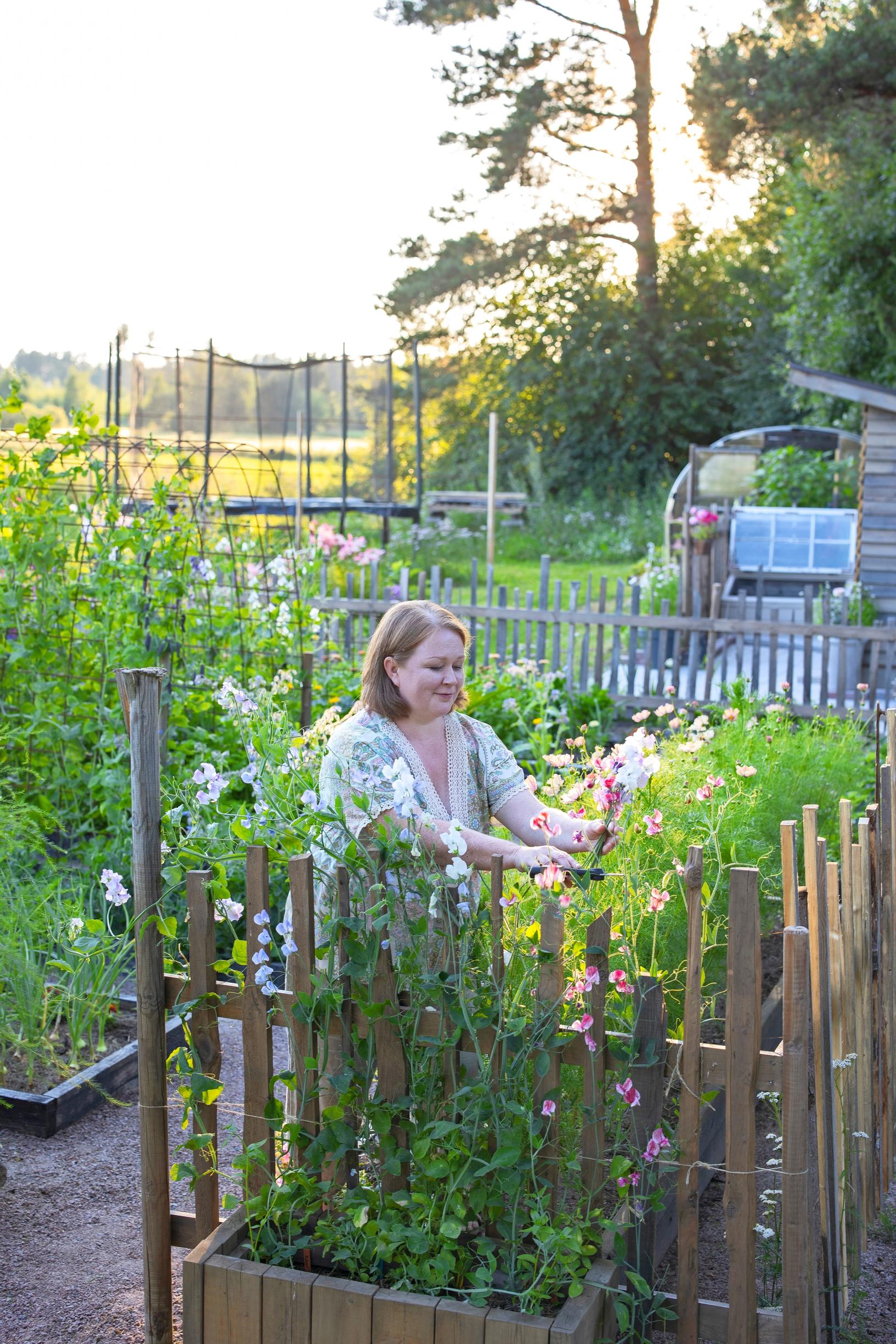
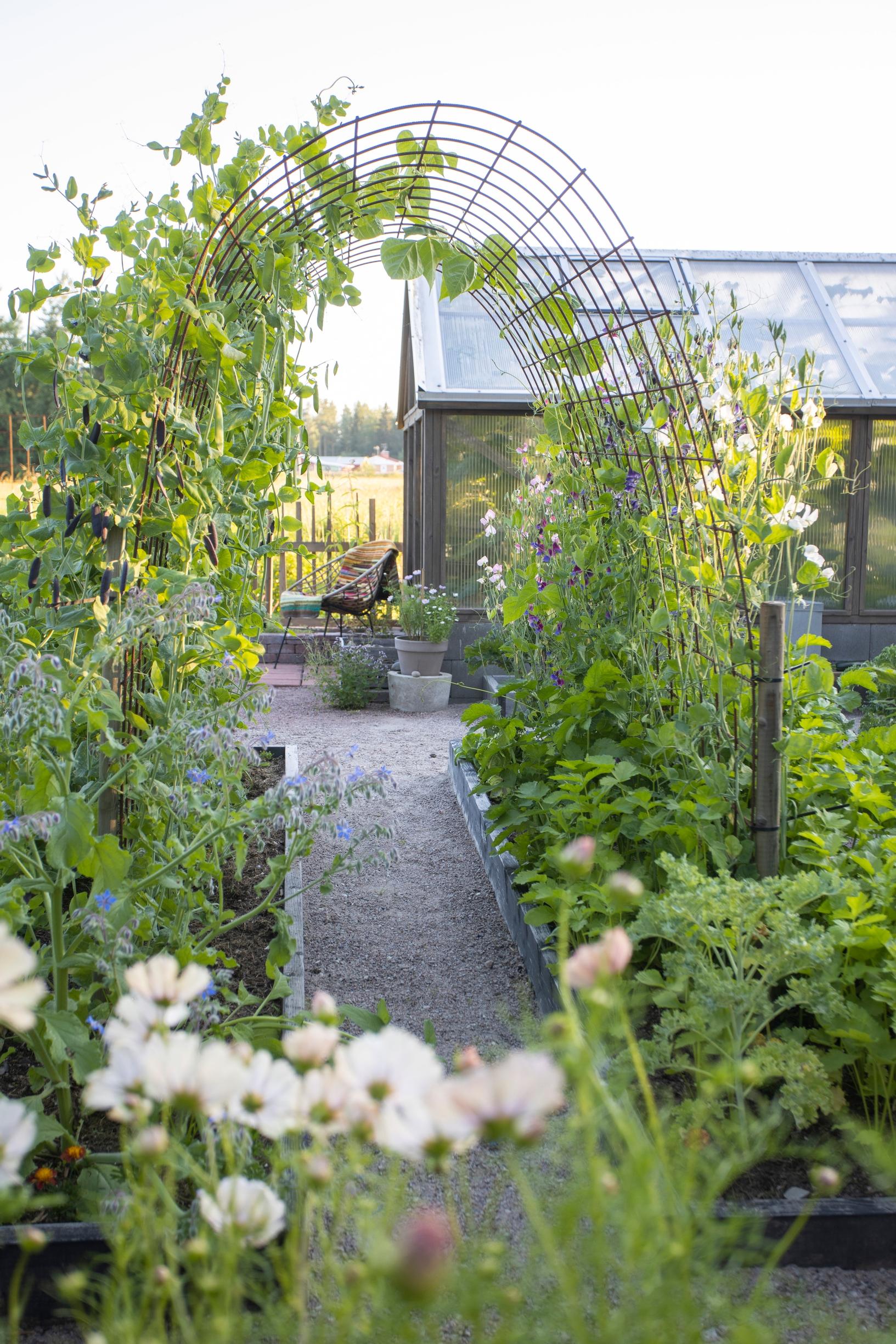

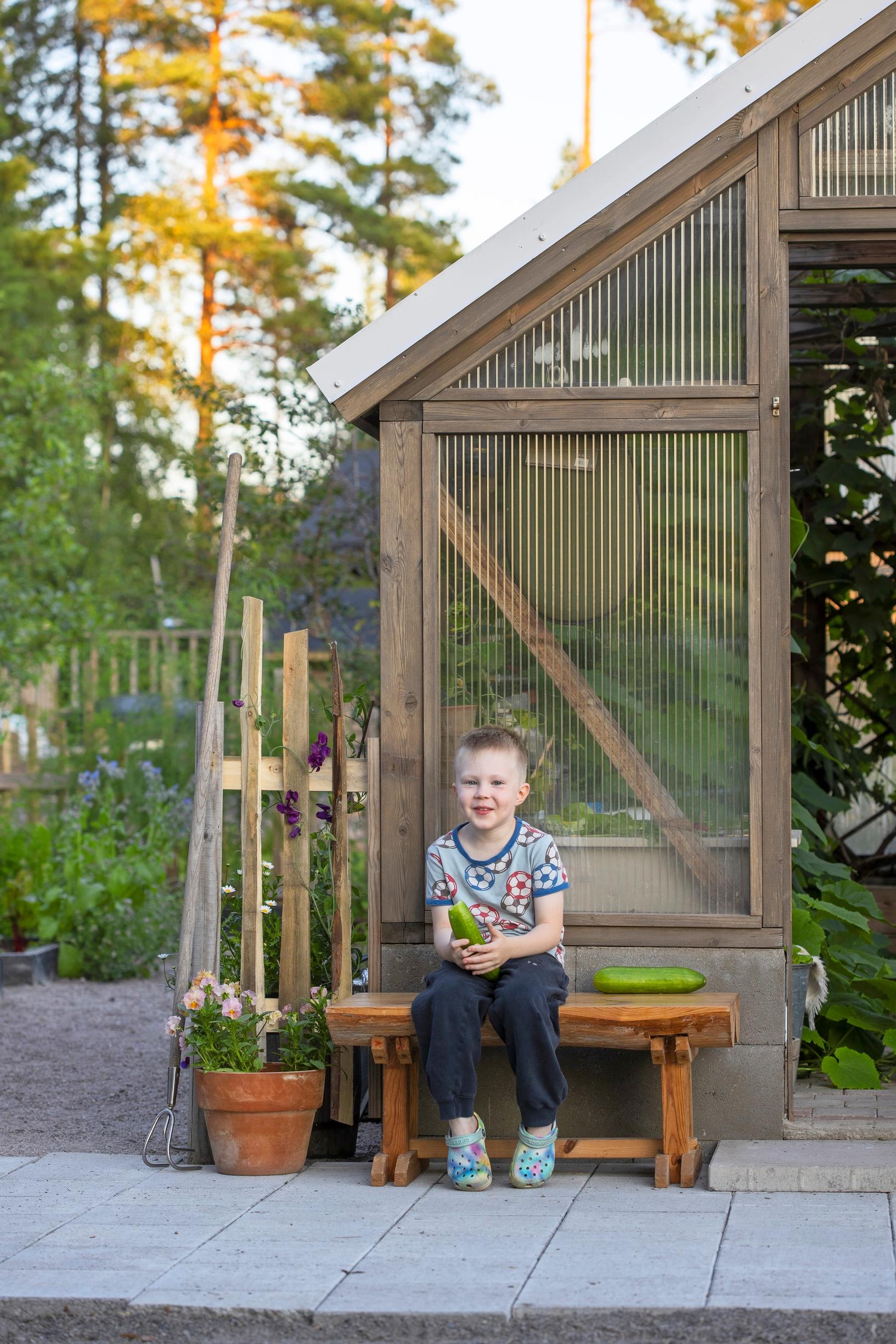
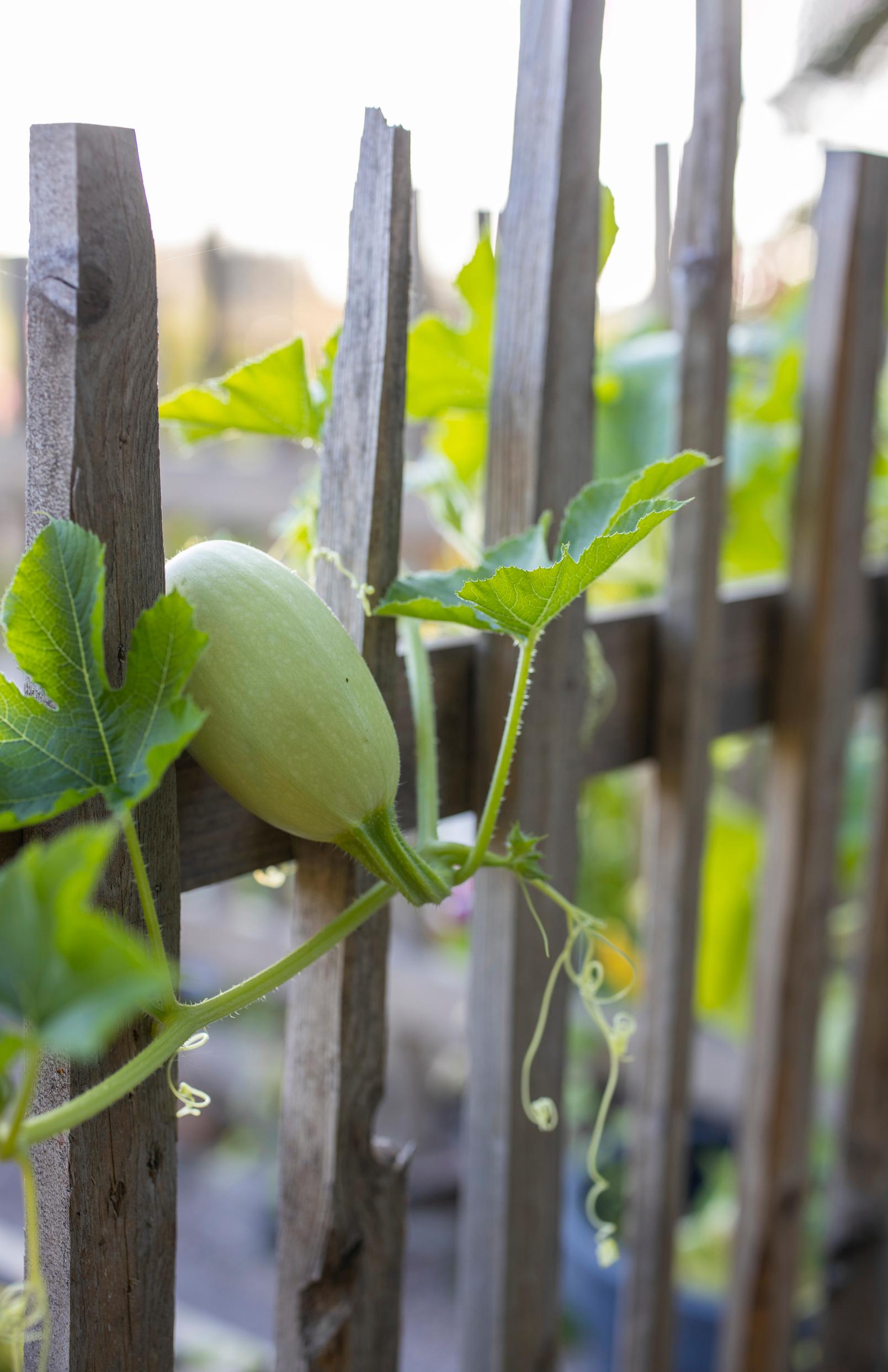
The location of my kitchen garden is perfect. It’s shaped like a bowl that retains heat, and the sun shines on it all day. The soil was already high-quality farmland, holding moisture so well that I barely have to water. At first, I had a real battle with weeds, but now I have them under control.
I tend to the soil organically by adding horse manure and composted plant waste to it in spring. I use grass clippings as mulch on the raised beds. It provides nutrients and suppresses weeds, and increases the humus content of the soil at the same time.
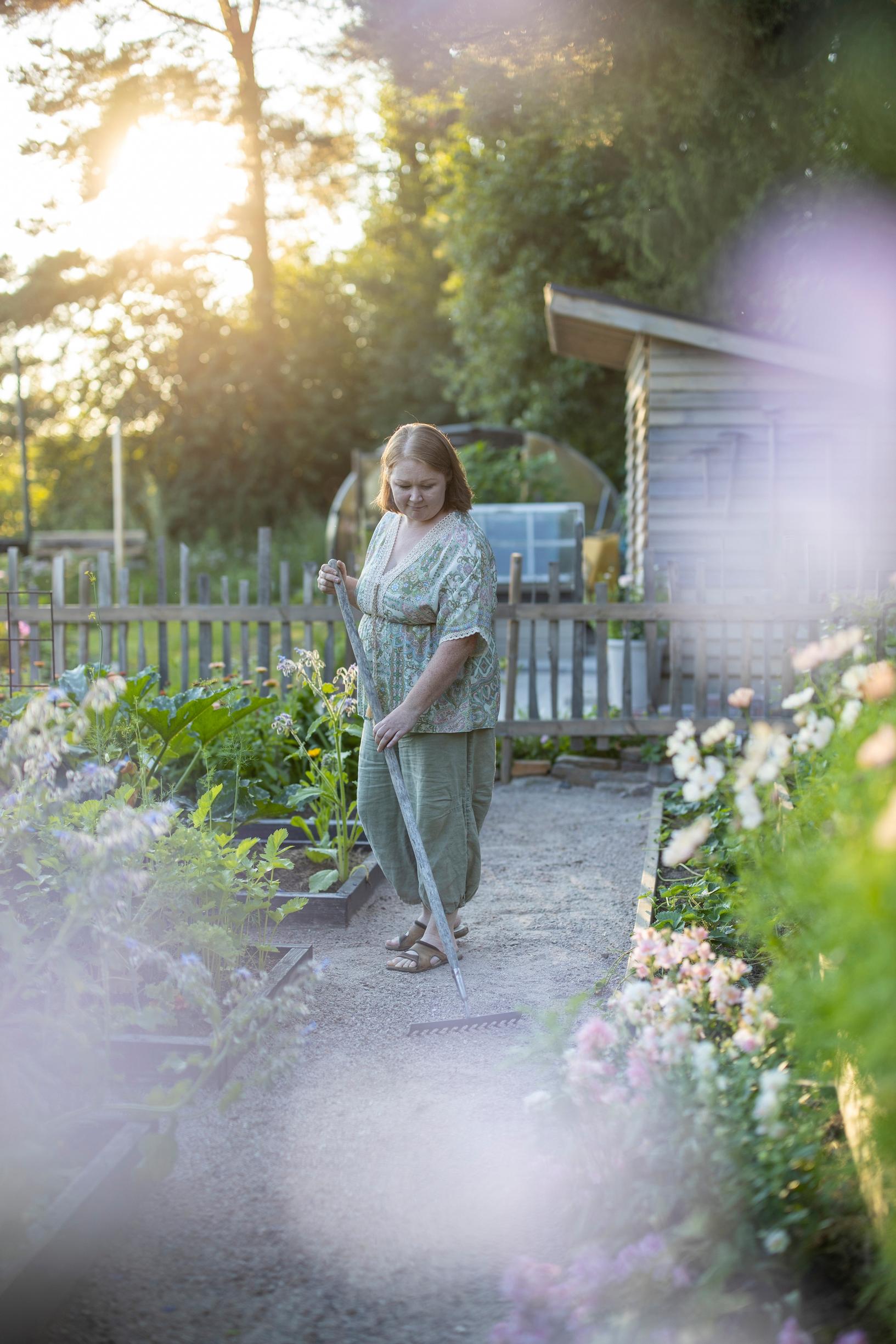
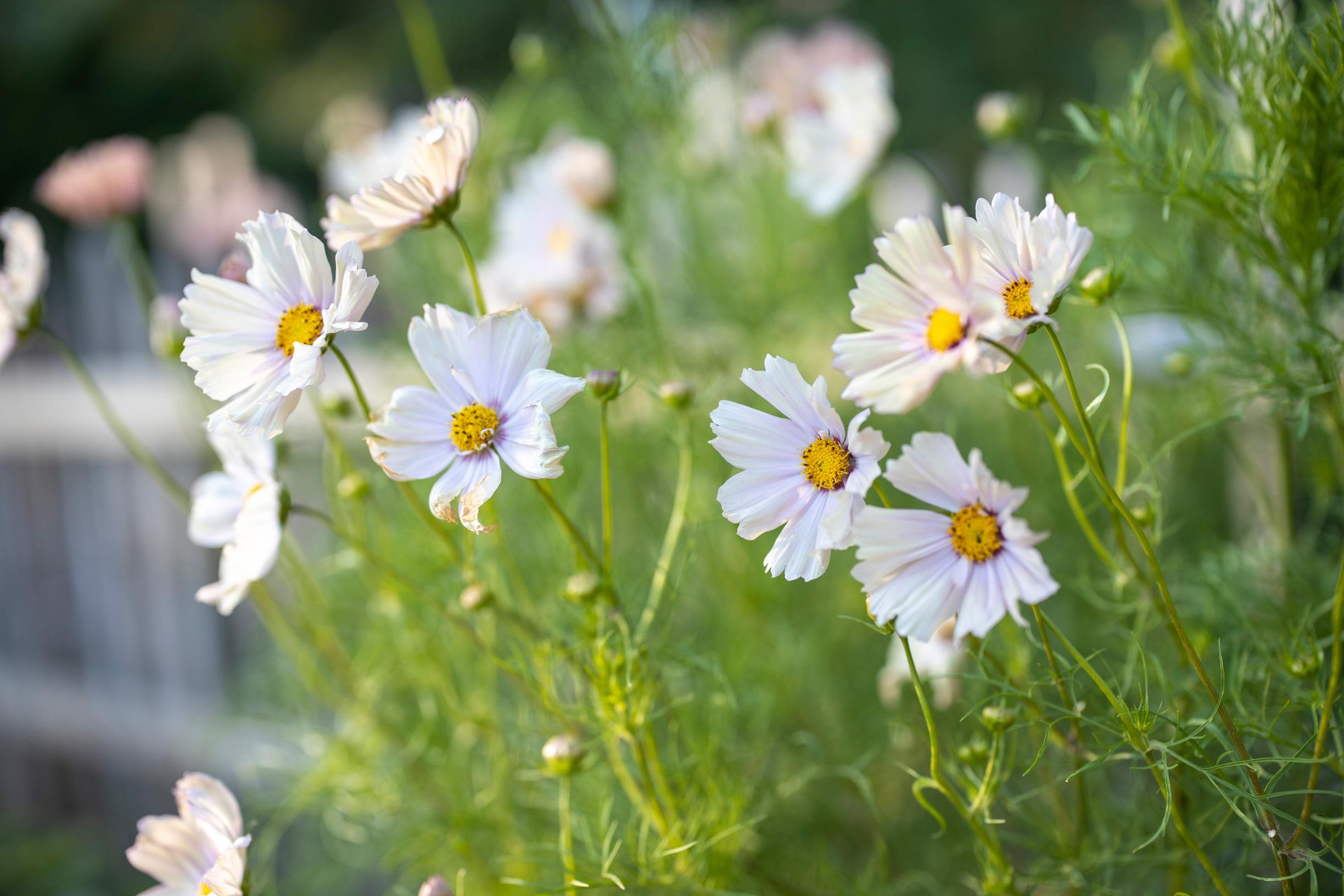
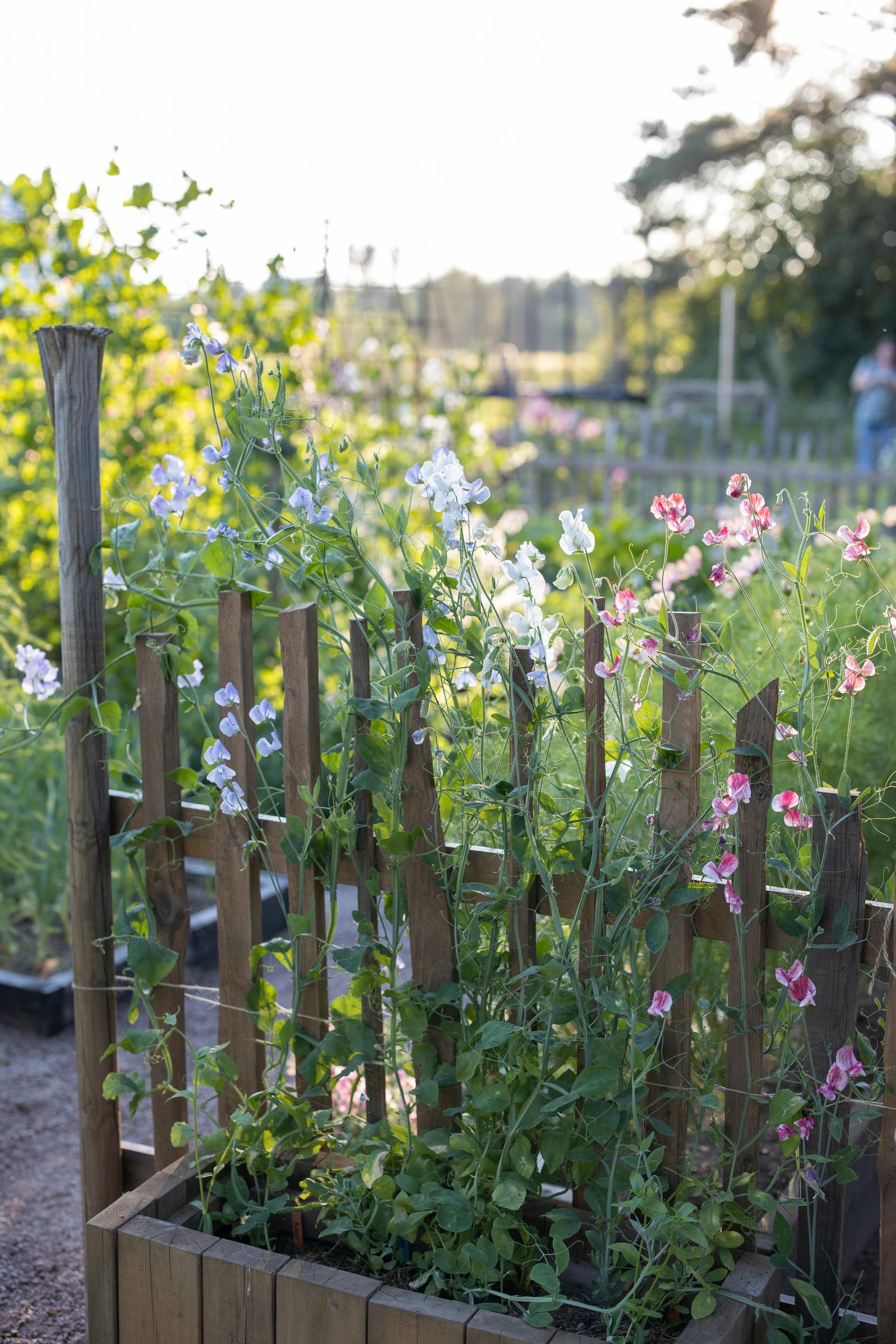
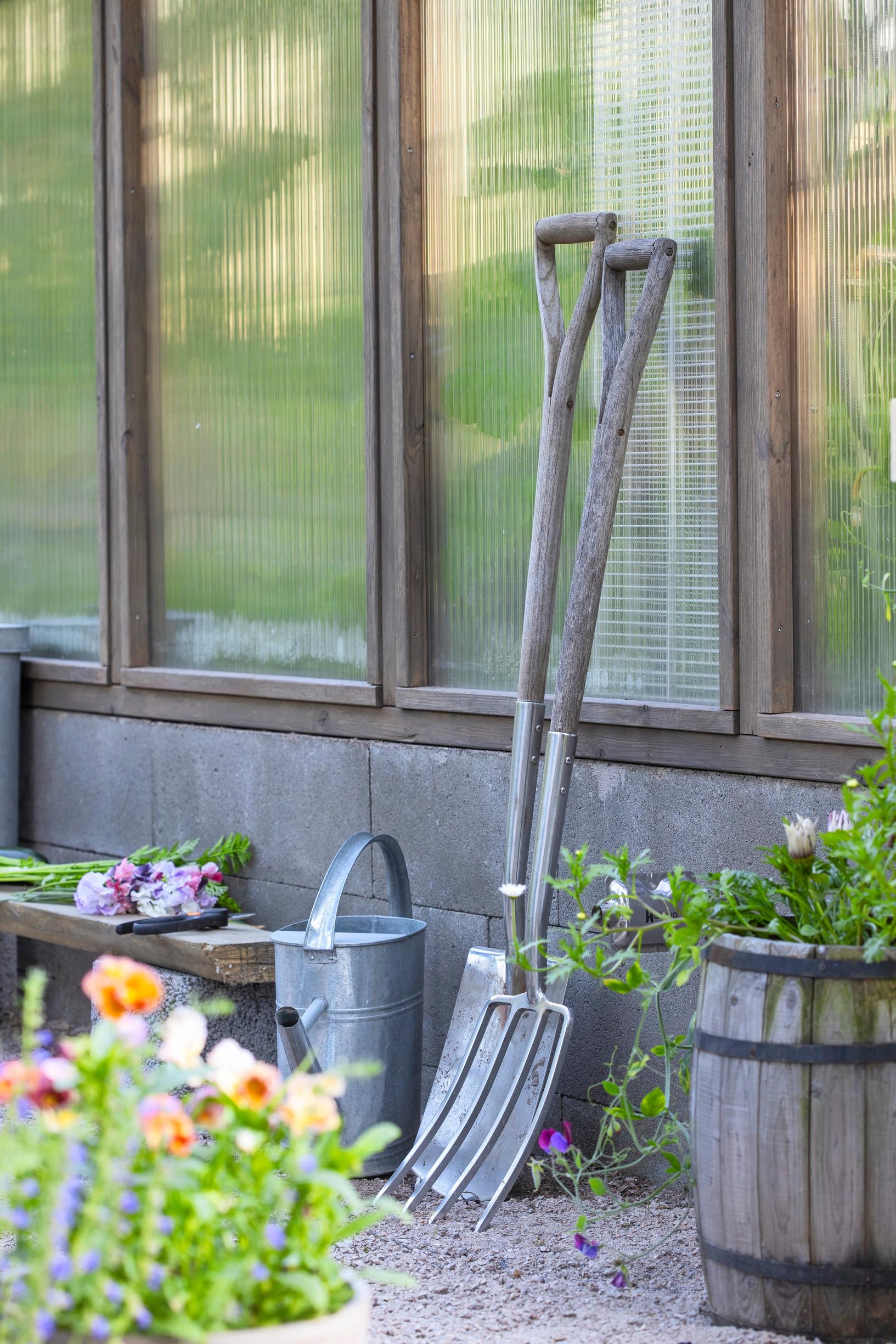
I start sowing in February with leeks, peppers, and chilies. In total, I grow several hundred seedlings throughout spring. I use supplemental lights indoors, but I move the young plants into the greenhouse as soon as possible, usually in April. The abundant natural light and cool conditions work wonders for them. Our homemade polycarbonate greenhouse retains heat, although I occasionally use a heater for a few weeks if necessary.
I always make sure we have plenty of peas and cucumbers growing, because they’re our sons’ Sampo’s and Eino’s favorites. A tall pea variety yields the maximum amount of pods in a small area. I rotate planting spots each year. This season, sweet peas share the same support as the peas, but next summer I may grow open field cucumbers or climbing zucchini there instead.
Only the greenhouses have the same crops every year, because one of them is too hot for tomatoes; that’s why it’s dedicated to cucumbers and chilies. Initially, I only grew edible produce, but in recent years I’ve also gotten excited about cut flowers too. Sweet peas are my specialty. Once you learn the proper techniques and care for them diligently, they’ll bloom until the first frost.
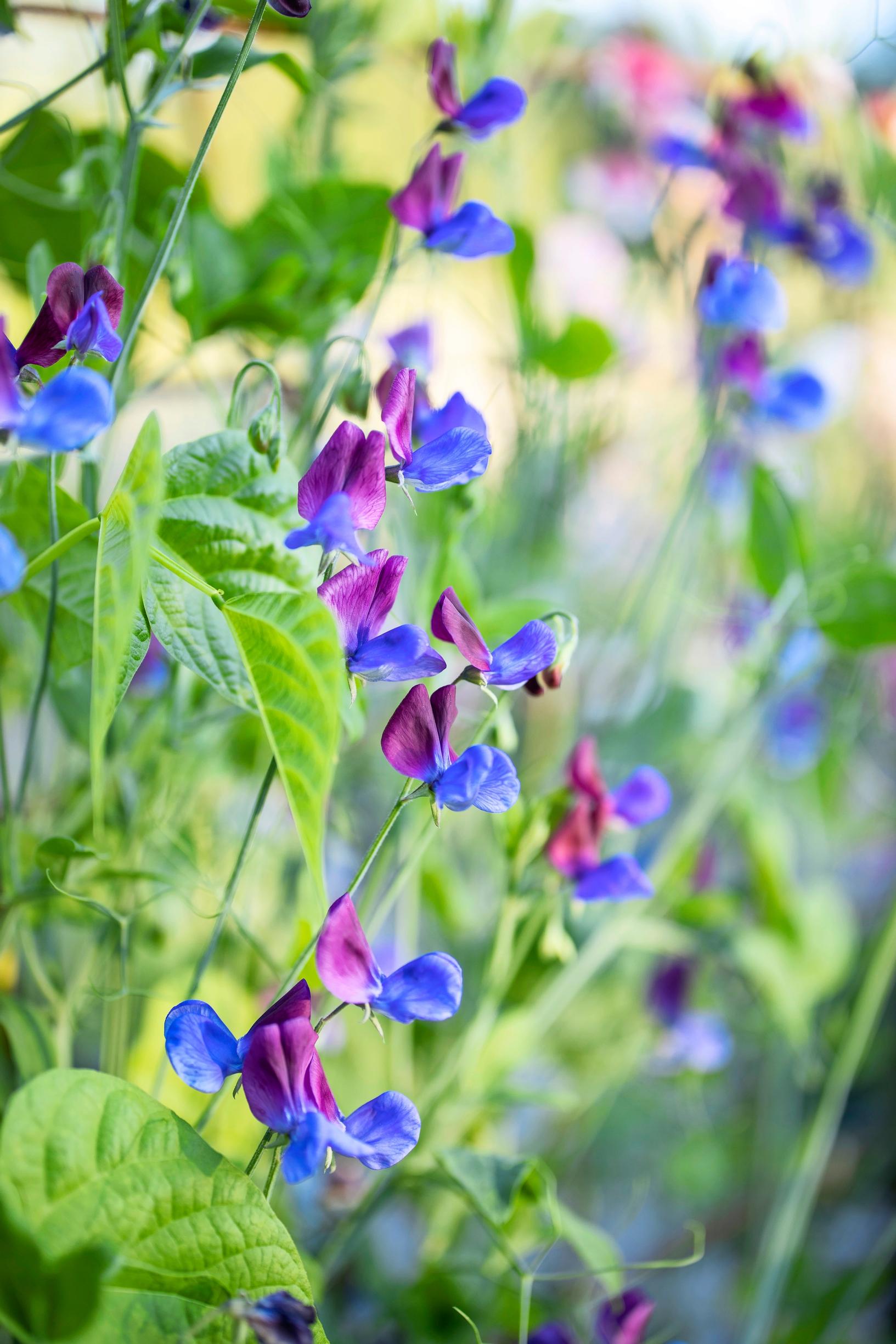
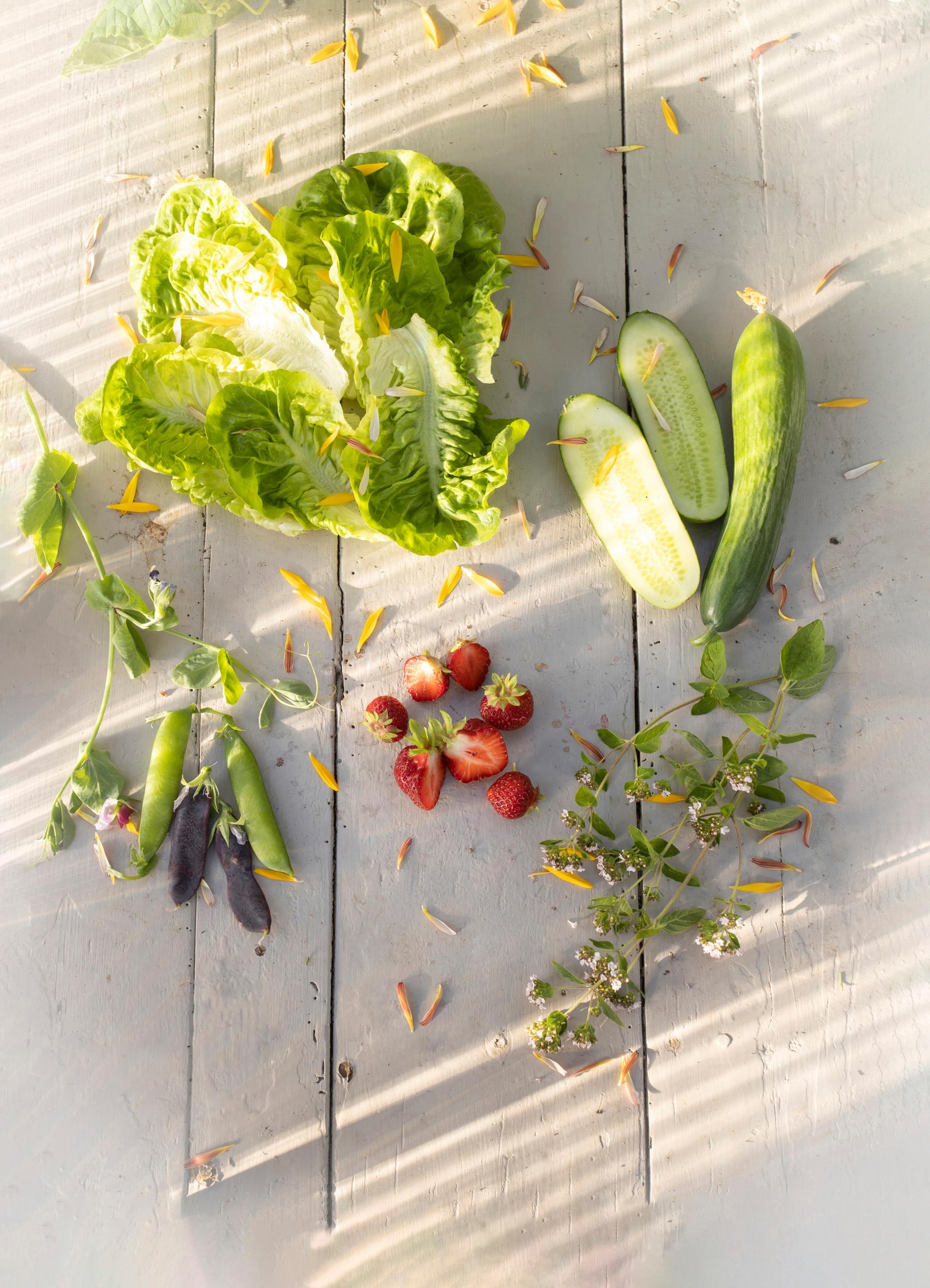


Starting in late June, we are self-sufficient when it comes to vegetables. It always feels just as great to skip the produce section at the grocery store. I grow almost every edible crop I can imagine and always experiment with something new. Watermelons weren’t a success, but this summer’s newcomer—chickpeas—looks promising. However, each pod has only a few seeds, so you’ll need a lot of space to get a substantial yield.
Every spring, I think that my kitchen garden could be bigger than its current 100 square meters. I’m so enthusiastic when the growing season finally begins. But by harvest time, I see that the space is just right because I want everything to stay neat and pretty. It’s important to me that my kitchen garden looks decorative, even though its main purpose is growing food. You don’t have to hide a beautiful vegetable patch at the far end of your garden.”
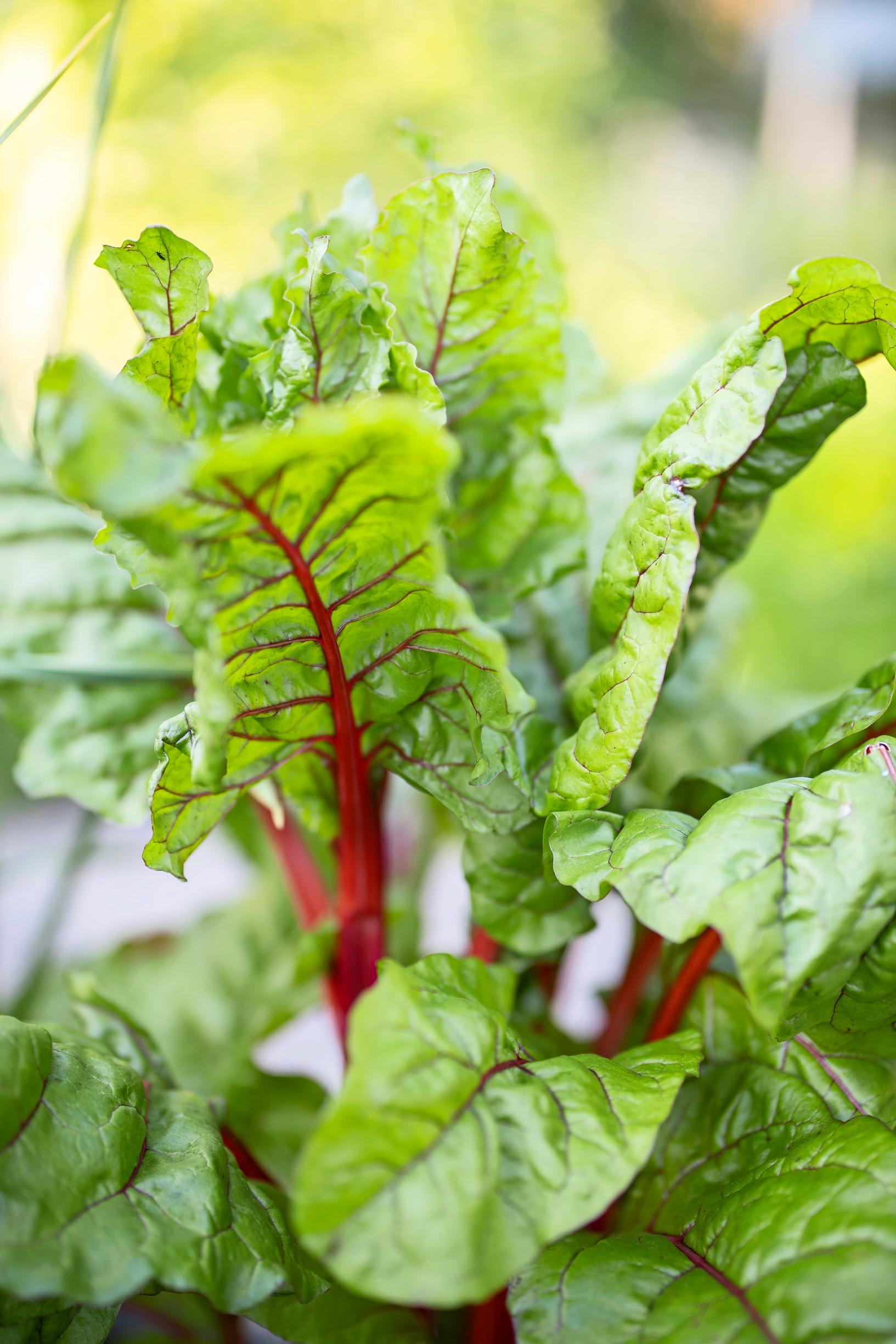

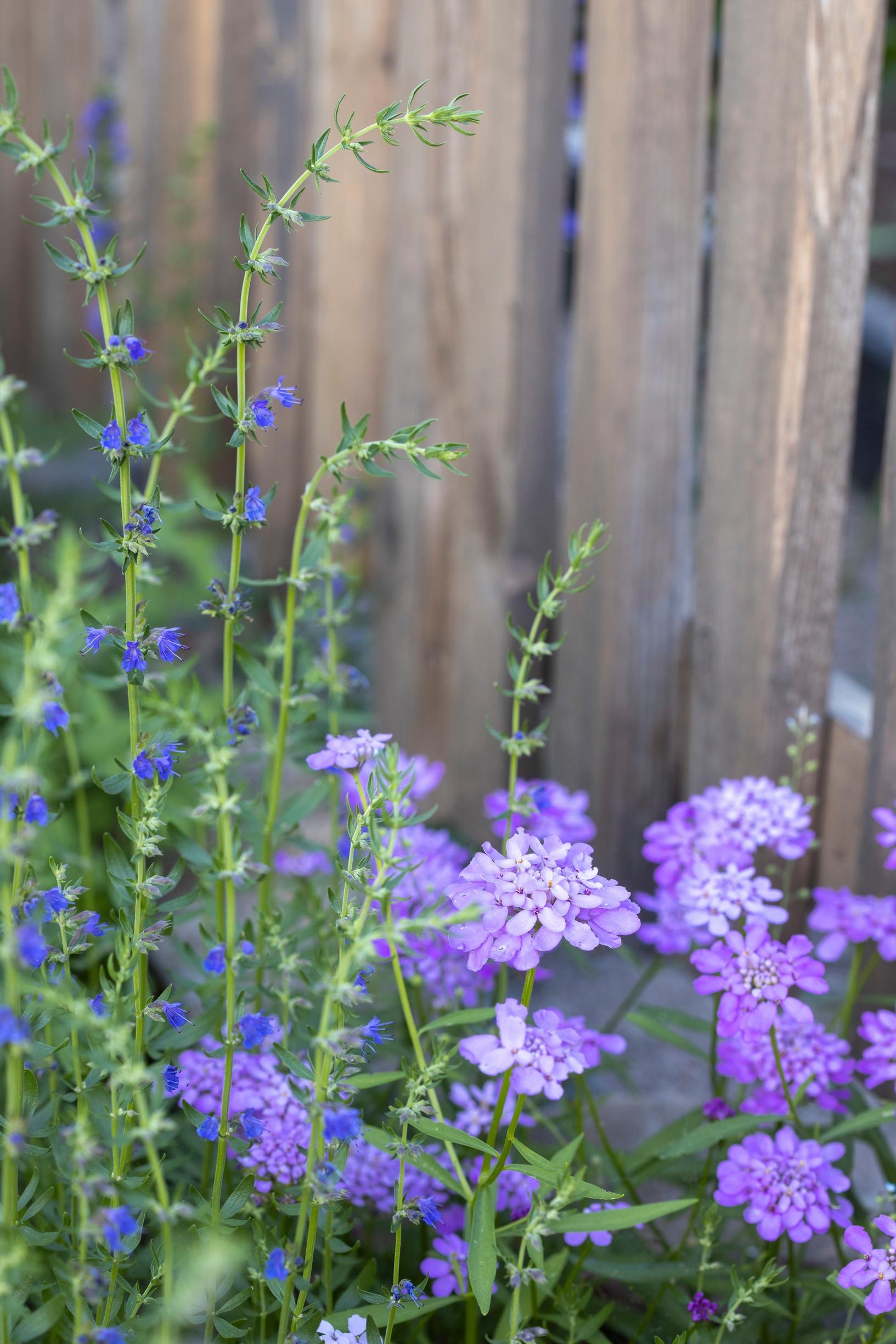
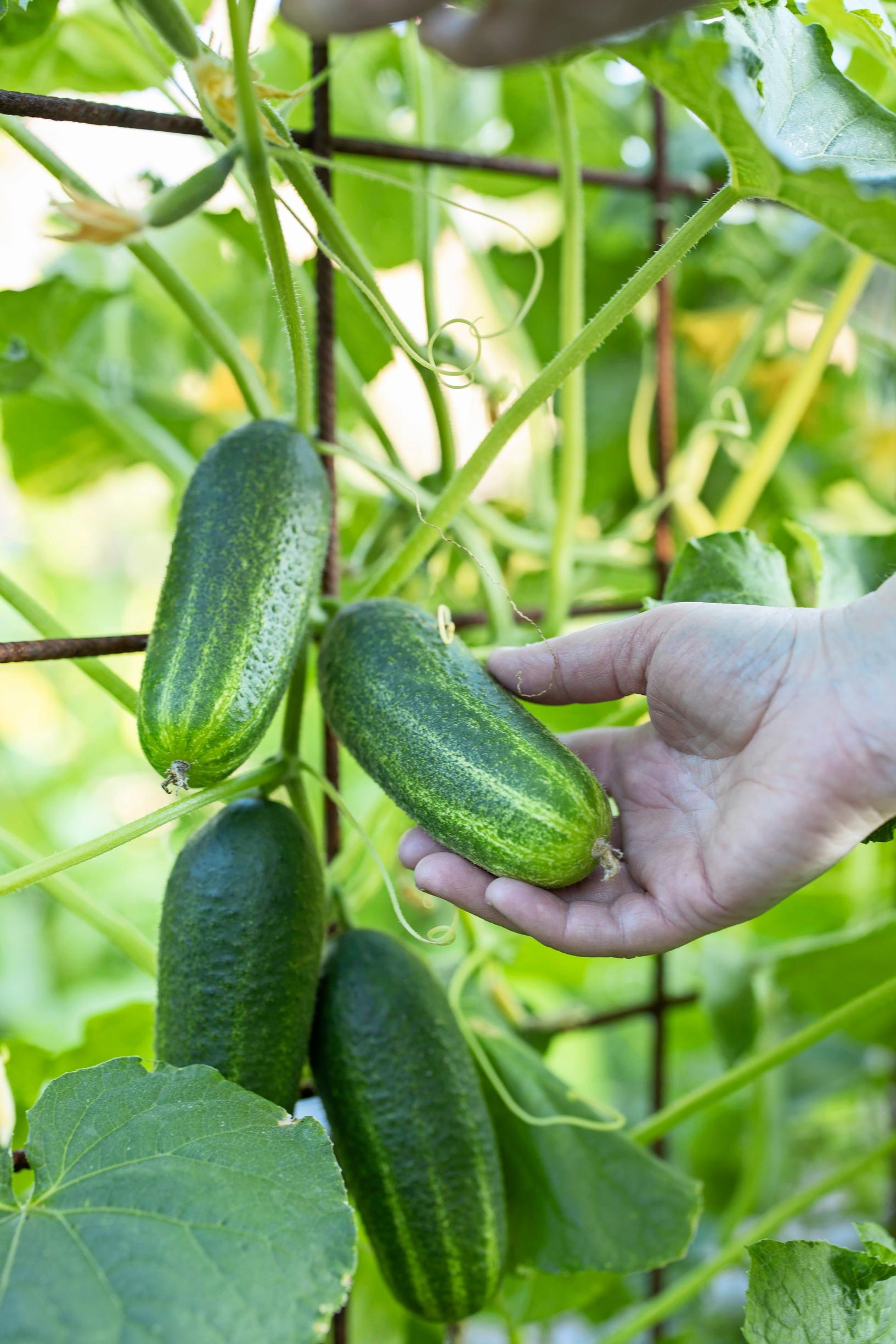
Virpi’s tips for kitchen garden:
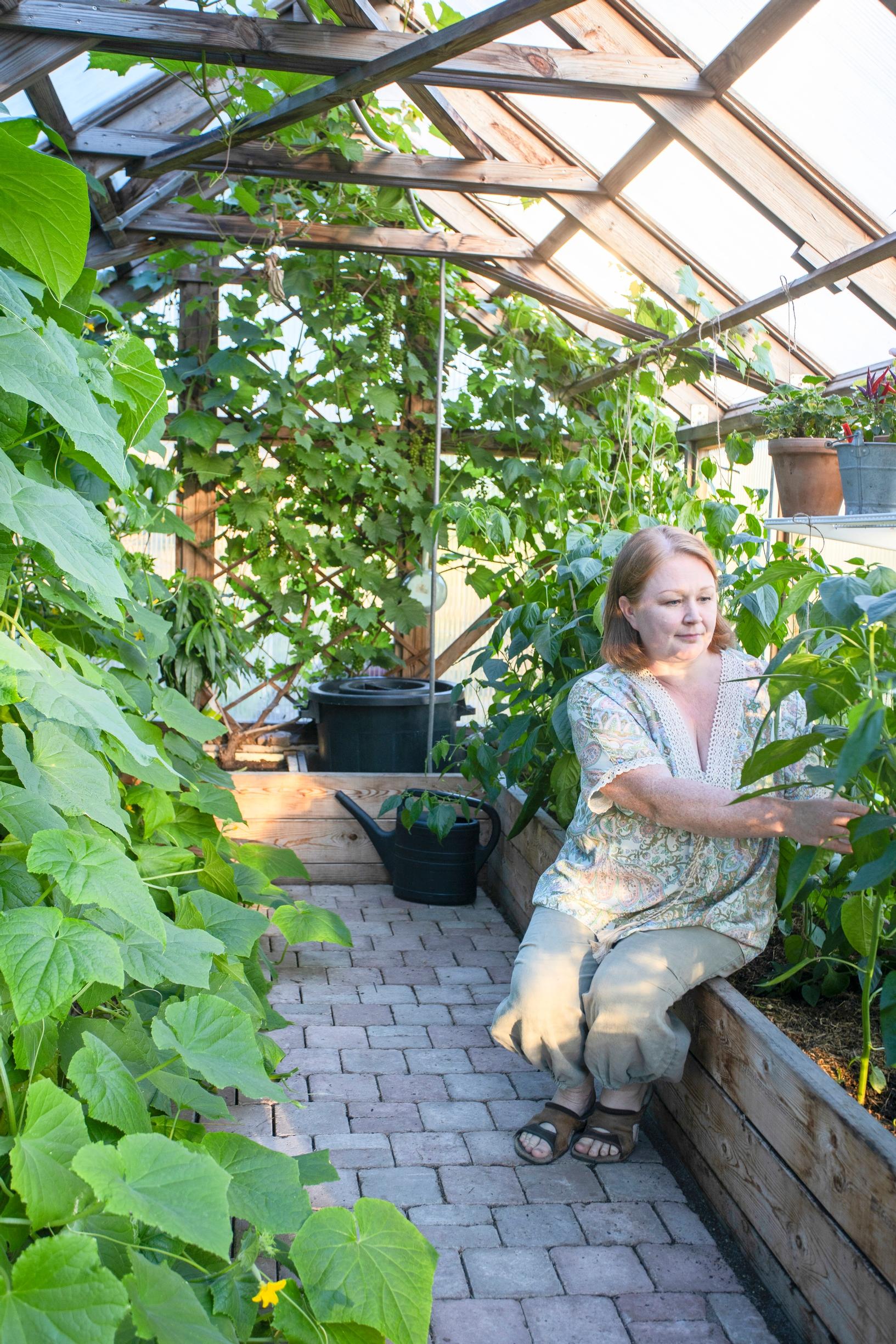
1. Plan the space realistically
Gardening is enjoyable as long as your vegetable patch is sized so that you can care for it comfortably. Remember that besides sowing and watering, you’ll need time for routine weeding, especially if your vegetable patch is new.
2. Remember climbing plants
All trailing crops, like peas, runner beans, open field cucumbers, winter squash, and climbing zucchini, can be trained to grow on a vertical support, saving space for other plants.
3. Succeed with sweet peas
Sweet peas don’t like having their roots disturbed. Sow their seeds in tall seed pots, and do not transplant the seedlings during the early growing phase. Pinch back the seedlings at least once to help them branch out. When planting them in their final spot, whether in the ground or a container, make sure their roots remain in the shade. Sweet peas thrive best in cool soil.
4. Define your borders boldly
Edging around raised beds creates a unified look, and fencing the patch makes the kitchen garden feel finished. It also keeps pets and wildlife away from your crops.
5. Mix organic materials into the soil
Adding any organic matter—like composted plant waste, well-rotted horse manure, or bedding from a backyard chicken coop—to the soil helps enrich it. The more organic matter in the soil, the better it can supply both nutrients and moisture to your plants.
6. Try chickpeas
This southern species can yield a good harvest in northern climates, too. Plant pre-grown seedlings in a greenhouse or a warm outdoor spot. The bushy growth habit requires a support. Fresh chickpeas must be boiled until tender before use. Like beans, they contain harmful lectin which breaks down during cooking.
